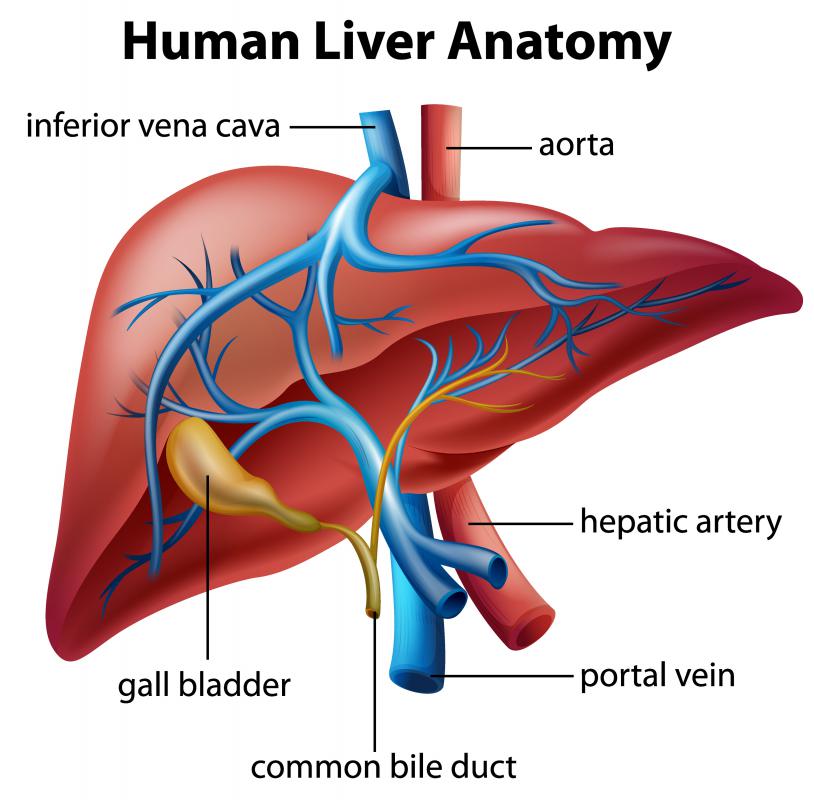At WiseGEEK, we're committed to delivering accurate, trustworthy information. Our expert-authored content is rigorously fact-checked and sourced from credible authorities. Discover how we uphold the highest standards in providing you with reliable knowledge.
What is the Biliary Tract?
The biliary tract is a system that creates, stores, moves, and releases bile into the small intestine to aid in digestion. This system is sometimes known as the biliary tree, as it has many branches near the top that connect, then terminate with the thick bile duct. This system is made up of ducts in and outside the liver, the portal vein, hepatic artery, and gallbladder. The liver itself, however, is occasionally excluded as a part of the biliary tree.
An essential part of most mammals, the biliary tract is a complex system that follows a simple path. This path begins with two ducts that are separated by what is known as the porta hepatis, a small fissure that separates two lobes and sits at the right side of the liver. These two ducts connect to form the common hepatic duct. This duct then leaves the liver and connects with the cystic duct, which then forms the common bile duct and joins with the pancreatic duct, thus forming the hepatopancreatic ampulla and entering the small intestine.

Although the liver is sometimes left out of the biliary tree, it plays a vital role in its process. When certain substances, such as caffeine or nicotine, enter the system, the liver soaks them up and changes their chemical structure so that they may become water-soluble. Once this is done, these chemicals are excreted into bile, which then moves waste away from the liver and into the gallbladder. In the gallbladder, it waits until food enters the system. Then bile and fats emulsify and are expelled into the small intestine.

It is said that the biliary tract begins to develop during the first five weeks of human gestation. During this development, many anomalies can occur that may cause problems in later life. These anomalies are typically divided into three distinct categories of form, number, and position. The gallbladder, for instance, may form either a complete or partial duplicate; cystohepatic ducts may form, causing bile to drain directly from the liver into the gallbladder; while biliary atresia — known as an obliteration of the internal or external bile ducts of the liver — may also occur.
In addition to anomalies, the biliary tract is prone to several health conditions. Gallstones, jaundice, and cirrhosis of the liver are all common complaints. The biliary tract is also prone to intestinal tract infections and certain cancers.
AS FEATURED ON:
AS FEATURED ON:

















Discuss this Article
Post your comments